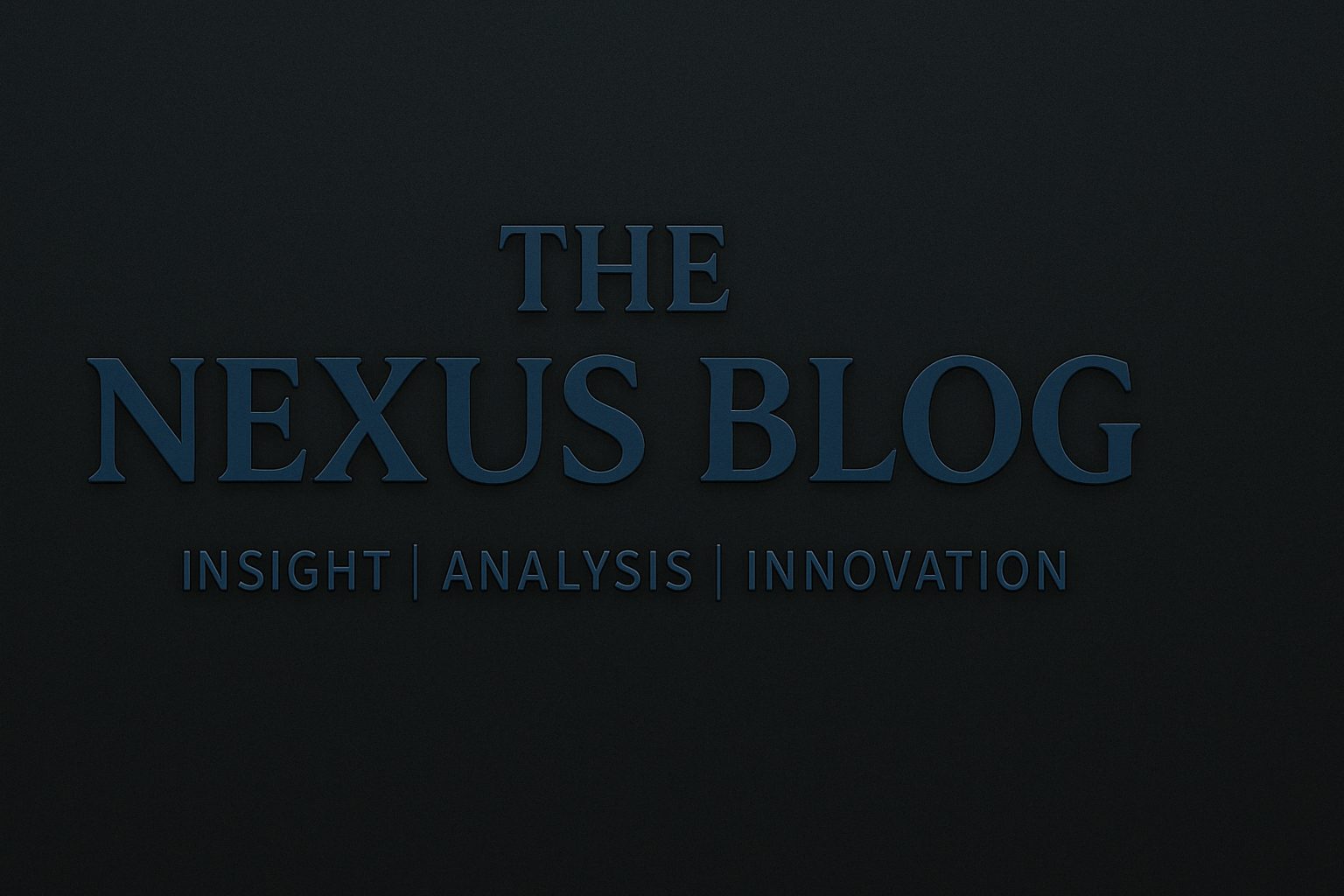Sensing the City: Building ISR from Commercial Tech
09/27/25
By: The Security Nexus
Introduction: Intelligence, Not Just Infrastructure
Intelligence, Surveillance, and Reconnaissance (ISR) is no longer the exclusive domain of nation-states. Today’s cities are saturated with sensors, and commercial actors are increasingly in the driver’s seat. From citizen step counts and drive logs to retail video feeds and satellite imagery, the ingredients for a powerful ISR stack are already in place—being quietly fused into situational awareness platforms that rival classified systems.
This isn’t hypothetical. It’s happening now. As this blog will demonstrate, the implications for national security, privacy, and strategic control are profound.
⸻
Ground Truth: Smart Lampposts and Prosumers
The foundation of this new ISR layer is local. In places like the Aveiro Tech City Living Lab (ATCLL) in Portugal, municipal lampposts are being upgraded into full-spectrum data nodes. These street-level platforms integrate fiber optic links, 5G, Wi-Fi, vehicle-to-infrastructure protocols, and environmental and mobility sensors (Arruda et al. 2022). Edge devices, such as NVIDIA Jetson units, process video and LIDAR feeds in real-time using AI models like YOLOv3, identifying cars, people, and traffic patterns at street corners before the data even leaves the device.
Meanwhile, platforms like IES Cities show how municipal datasets, bike-sharing apps, and citizen-generated complaints are fused into interactive public intelligence platforms (Belmonte et al. 2015). The model shifts citizens from mere users to prosumers—both data producers and consumers.
The strategic implication: urban ISR is now a mesh, not a hierarchy. Real-time, decentralized, and partially open-source.
⸻
Eyes in the Sky: From Pixels to Precision ISR
Overhead, commercial satellites increasingly deliver high-resolution imagery that AI can process into detailed infrastructure maps. But raw pixels aren’t enough—what matters is fusion.
Take Singhai et al. (2021) ’s four-step process for refining low-resolution satellite images: super-resolution AI (such as Real-ESRGAN) enhances clarity, allowing models like Mask R-CNN with multipath vision transformers to extract building footprints with up to 0.81 F1 accuracy—even in suburban areas. Bittner et al. (2021) further improve results by fusing RGB, panchromatic, and normalized DSM height data, especially for complex rooftops or dense urban zones.
For full 3D awareness, Zuo et al. (2021) introduce CAPNet, an AI that uses multi-angle views from China’s ZY-3 satellites to generate detailed volumetric models of buildings. This enables near real-time mapping of urban topography—vital for emergency response, target development, or economic surveillance.
⸻
Training Smarter: Less Human, More Machine
Historically, AI ISR pipelines required painstaking human labeling—tracing buildings, annotating features. But newer techniques slash this cost.
Using semi-supervised learning (SSL) and stacked autoencoders (SAE), models can now learn from vast unlabeled datasets with less than 0.08% labeled data—yet still approach LIDAR-level classification performance (Chen et al. 2021). This makes global-scale, near-real-time ISR from commercial sources economically viable.
⸻
The Backbone: LEO and Satellite IoT Integration
All this sensing is useless without a transport layer. Enter commercial LEO satellite IoT networks.
Unlike traditional geostationary systems with latencies of over 240 ms, LEO constellations like Astrocast or Miriota offer delivery times of under 15 minutes for sensor messages, utilizing UHF/VHF or L-band protocols (Centenaro et al., 2021). Some even piggyback on LoRaWAN protocols, turning small satellites into flying IoT gateways.
The clincher? These systems are being integrated into 5G’s new radio (NR) architecture—via non-terrestrial networks (NTN)—allowing seamless handoffs between ground and space-based ISR nodes. However, regulatory bottlenecks persist: spectrum coordination across CEPT, FCC, and ITU rules can delay constellation rollout by several years.
⸻
Implications: When Anyone Can Map Everything
The convergence is real. Commercial ISR stacks are now capable of:
• Mapping every building’s 3D footprint with meter-level accuracy,
• Tracking traffic, pollution, and human movement in real time,
• Delivering that fused intelligence across the globe in minutes.
And all without a single classified input.
This changes the game. Governments can’t count on opacity anymore. Non-state actors, adversaries, and civil society alike can now tap into open-source ISR pipelines with capabilities that once required national budgets and classified platforms.
⸻
Conclusion: Rethinking Policy for Pervasive ISR
This is no longer about surveillance or privacy. It’s about control, access, and adaptation. Security professionals must ask:
• Who governs these data flows?
• How can attribution, adversarial spoofing, and misinformation be mitigated?
• Should ISR capabilities this powerful require licensing or ethical guardrails?
When the sensor is everywhere, and the analyst is anyone, ISR policy must move faster than it ever has.
⸻
📚 Sources
• Arruda, Pedro, et al. 2022. Aveiro Tech City Living Lab. IEEE Access.
• Belmonte, Oscar, et al. 2015. IES Cities: Smart Cities through Citizen-Engaged Platforms. Procedia Computer Science.
• Singhai, Shubham, et al. 2021. Building Footprint Extraction with Vision Transformers. Remote Sensing 13(2): 371.
• Bittner, Ksenia, et al. 2021. Fully Convolutional Networks for Multisource Building Extraction. ISPRS Journal.
• Zuo, Rinsen, et al. 2021. Cross-Angle Propagation Network for Built-Up Area Extraction. IEEE GRSL.
• Chen, S., et al. 2021. Remote Sensing AI with Semi-Supervised Learning. Remote Sensing 13(2): 371.
• Centenaro, Marco, et al. 2022. Satellite IoT and 5G Integration. Computer Communications 192: 77–93.

